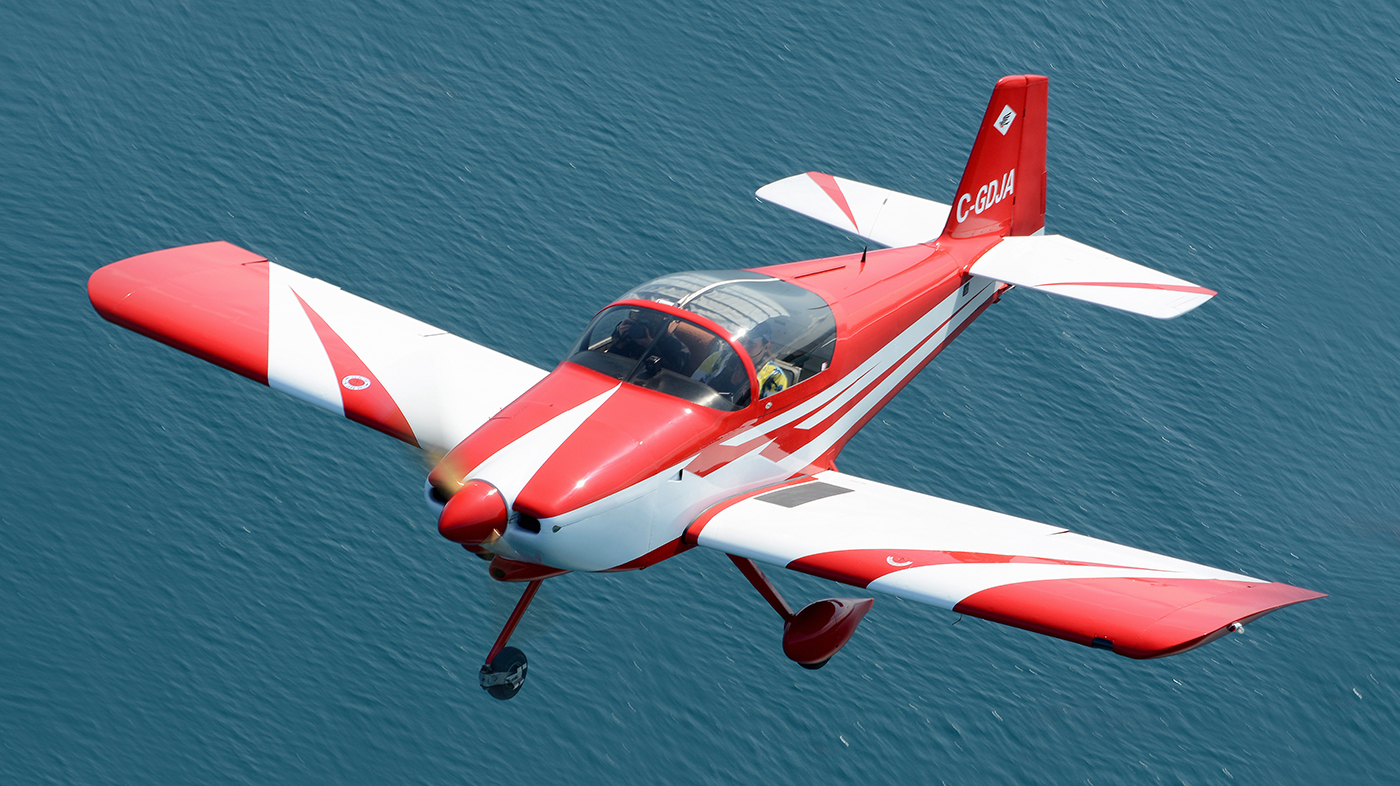Estimated reading time 12 minutes, 37 seconds.
Editor’s introduction: At Skies, we love connecting with people who are passionate about aviation! In this story, we check in with husband and wife team Dave and Robin Hadfield. Both are pilots, but this story focuses on Robin’s triumphant “return to the air” in 2013. While Dave was instrumental in the process, it was Robin’s determination that saw her soar again. Here, they take turns telling us their story, with Robin’s comments in italics and Dave’s in normal font.
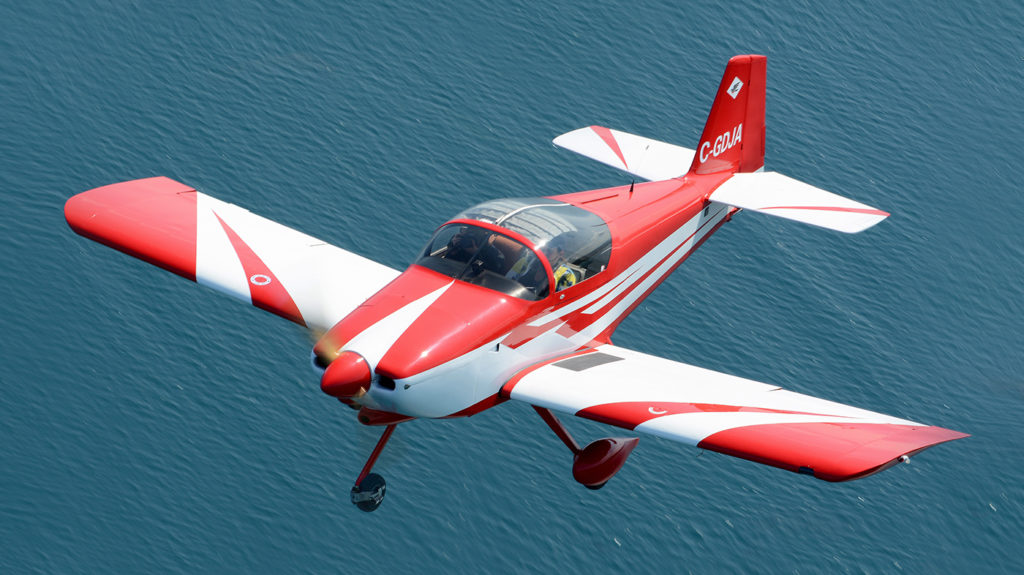
Robin: I was one of those kids who would lay outside in the summer on the grass, staring up at the sky watching airplanes and their contrails; wondering where they were going and what it was like to be up in the air. In the fall of 1979, I had been playing in a polo match and afterwards passed by the Maple Airport, just north of Toronto. Intrigued by a sign advertising $10 intro flights, I made a left turn into the parking lot, turned off my car and entered the terminal building. As the only female in the place (certainly the only person who smelled like a horse barn), all the other pilots watched my every step as I strode up to the counter and announced, “I would like to take an intro flight – who can take me up?” That was it, I was hooked at first flight.
Dave: I met Robin at an aerobatic contest. She was a judge; I was a contestant. She flew into the event in a Pitts S2A. I was flying a Stampe SV4B. Each of us thought the other owned the airplanes! I tried to influence the judge, had some success, and by the end of that summer we were engaged.
Aviation can take you to wonderful places where you meet interesting people. In the spring of 1980 at my first aerobatic competition, I watched a young, handsome Air Canada pilot win the Sportsman category. A year later, I married that guy and moved west to Manitoba where he was based. We bought a share in a Bellanca Decathlon and were co-directors of the Canadian National Aerobatics Championships for five years. We continued flying together until our first child was too big to fit in someone’s lap in the Decathlon. When our daughter came along three years later, we moved from flying to sailing. For the next 15 years, all my flying was with Dave in club-owned aircraft. There was no point taking two pilot memberships, so we just did one in his name and I stopped recording my flight hours as PIC (pilot in command).
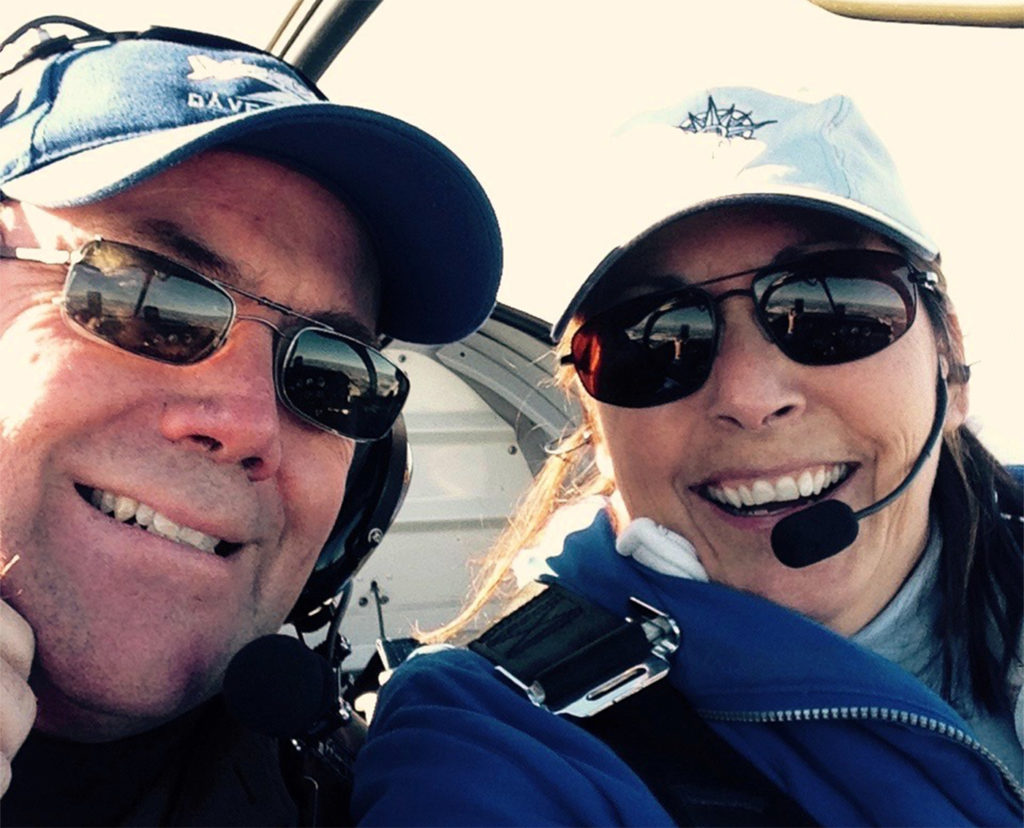
Robin never liked to be left behind and took the controls as often as possible. I recall one wonderful ferry flight in a Cessna 172 when we flew westward across the Prairies. There was a strong headwind, but at very low altitudes it was dead calm. She dropped down to 200 feet AGL and we counted gophers for an hour across the endless farm fields, Robin banking around the farmhouses and smiling the whole time.
In 1994, we moved back to Ontario and became involved with the Edenvale Classic Aircraft Foundation; me as a volunteer, treasurer and eventually president. I enjoyed the vintage Fleet Canuck and DH-82A Tiger Moth, but again not flying as PIC. Eventually, I figured that I would never fly solo again – it was always going to be Dave and I together – so I let my aviation medical lapse.
The Tiger Moth time led to an introduction at Vintage Wings of Canada, at Gatineau. Then followed a Fox Moth, a Taperwing and then the P-40N Kittyhawk. Robin enjoyed handling the fighter from the rear-seat cockpit. There was a big grin on her face then!
In 2008, we decided it was time for us to buy our own airplane. We looked at all the standard classic airplanes like a Stinson or a Cessna 170, but I said, “No. It has to have a round engine.”
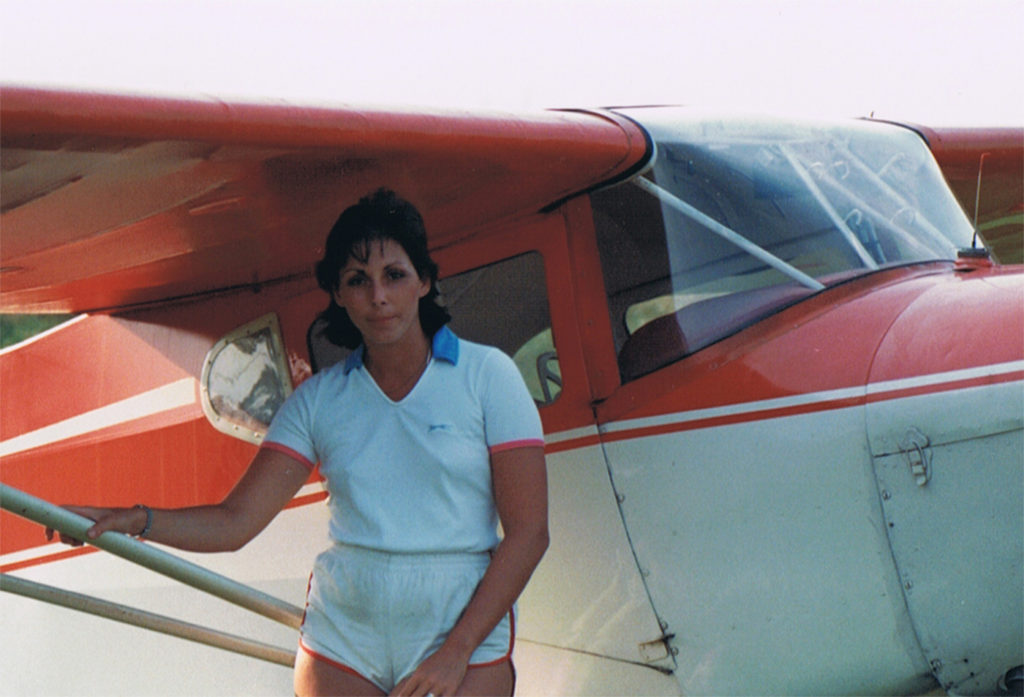
This made my eyebrows go up! A radial? Wow… “Sure, sweetheart,” I replied. “I’ll find one.” A search led us to Brampton, Ont., where we found a classic Fairchild 24W owned by Reid Hutchinson, who’d flown them (and Spitfires) during the war. Robin impressed him, and soon we owned it.
Reid wanted a good home for the Fairchild; someone who knew how to take care of a rare wood and fabric aircraft. We had to refurbish the engine (three cylinders had to come off) but by the next summer we were really enjoying it. It was a perfect plane for touring Southern Ontario. We ranged from Pelee Island to Gatineau, Que. Again, I still did not see a need to solo in the Fairchild since it is so large and heavy that I could not even push it up to the fuel pumps.
We had a lot of fun learning to “speak Fairchild.” This is not the easiest aircraft for recurrency training. It’s a docile taildragger, but you’re quite blind on takeoff until the tail comes up. There are no brakes in the right seat. The noise is stupendous. And on pavement it can be challenging, like all tailwheel aircraft. Robin did fine, and her feet came to life.
I started to miss going up by myself. One day in 2012, I walked in our front door and said, “Dear, I have made a decision! I do not want to fly just with you anymore, I want my own airplane!” To many guys this would be a scary moment, but not Dave. He immediately started looking into what airplane I should buy.

We chose a Van’s RV-6a. We were both intrigued by the reputation of these fine little homebuilts. We did not want the cost of another certified aircraft – I’m not an AME, but I’m handy with tools. We found one that had been professionally built, but needed some TLC, and soon we had what every couple needs: TWO light aircraft.
It was the first nosewheel plane I had flown in decades. In the beginning, I wasn’t happy with the RV-6a, but after we sorted out some overheating problems I started to love flying it. Originally, I said I didn’t care about the extra speed in the RV-6 – what a ridiculous statement to make! During one trip home from the cottage our groundspeed climbed over 200 mph! I was hooked.
Now came the more intensive training phase. Robin had her medical back again. She’d written the PSTAR (groundschool) exam. The goal was to get her ready for her checkride. I dusted off my old instructing guide and re-read my 1978 notes. We spent many hours in the air going over the traditional exercises.
So, what’s it like instructing your spouse? Step No. 1 is to avoid a divorce; and the simplest way to accomplish that is to shut up. My father (Roger Hadfield, a 28,000-hour pilot) once advised me that when an instructor sees something that requires a verbal correction, they should first count to 10, and wait for the student to recognize and correct it on their own. Well, if that student is your spouse, the best advice is to count to 10, and then cover it during the debriefing.
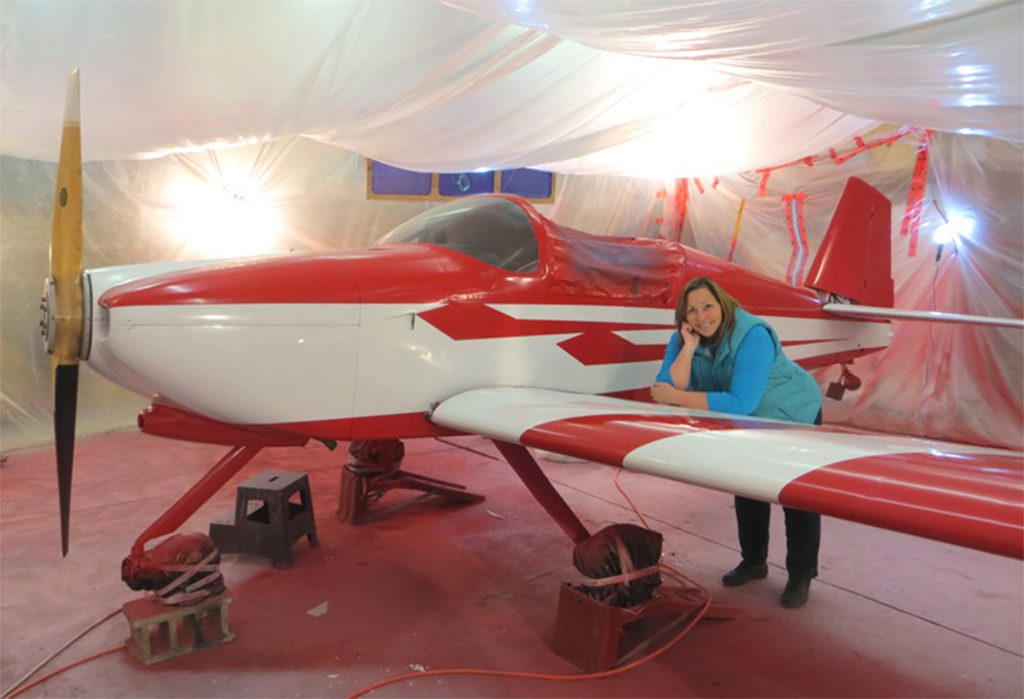
I think because of Dave’s flight experience and my recognition of his knowing more than me in aviation, having him as an instructor worked well – once he learned how to instruct to my type of personality! Like a relationship, we both learned when to speak up and when to be quiet. There was never a strain because Dave was used to working in a team environment.
The big thing was to take off our Spouse Hats and put on our Pilot Hats. We were focused on becoming better. We both acted and spoke as professionally as possible. We tried to leave our married life on the ground. In the air it was instructor, student and a drive to improve. Robin’s biggest challenge was how to position her brain 10 miles ahead of the airplane. That is quite normal for anyone who has not been PIC for a while – even at the airline level. We worked through it.

Dave showed a respect for the person he was instructing. I certainly never felt a strain, other than him talking too much sometimes when we were in the circuit; but when I’d say to stop, he would. It worked well for us. Some men do not treat their spouse, partner or girlfriend as their equal. They tend to talk down to them. I’ve heard other women say this is why they don’t fly with their husband/partner. It can be the same in boating. You rarely see a woman at the helm. But I was going to be solo in the RV-6a; we both accepted that, and the goal was for me to shake off the cobwebs and to be as prepared as possible.
Robin worked hard, holding herself to a high standard. She studied, bought textbooks, networked; even learned nav programs like ForeFlight (which I’d never heard about, but now use). It was a two-way street. I was training her hands and feet, but I was also being brought up-to-date. The modern world of general aviation is quite different from airline or vintage flying. I learned a lot from her fresh and vigorous approach.
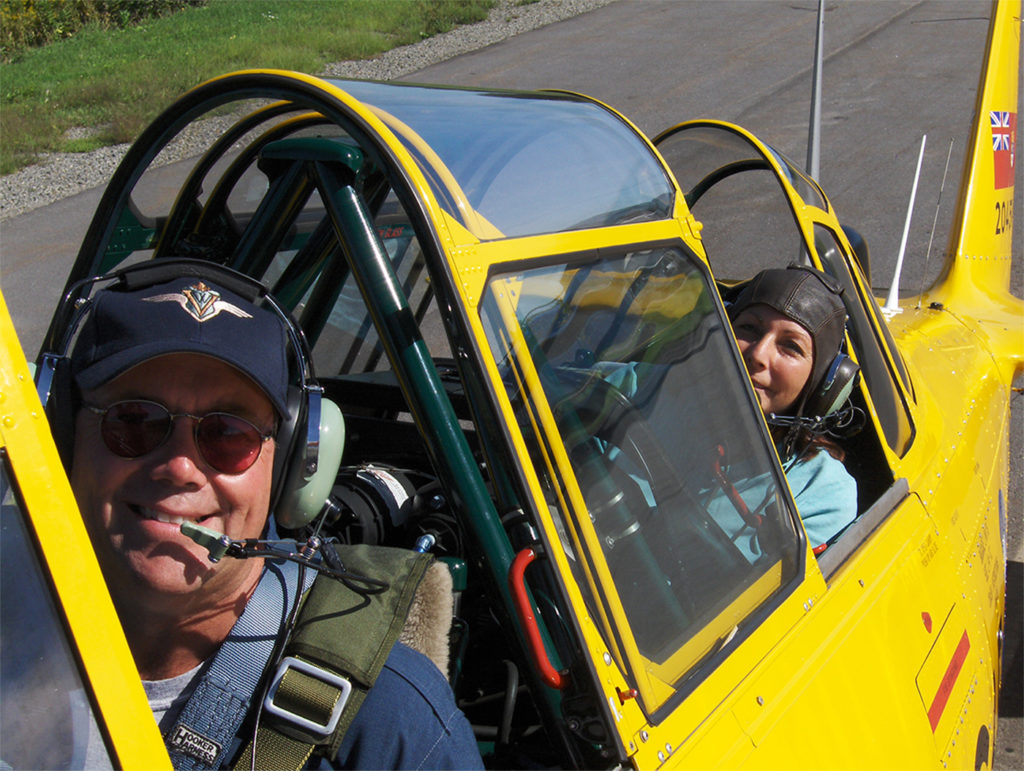
To me, the main point was getting back to flying, period. It’s not relevant whether the instructor was my spouse or not. But Dave was experienced, had been an instructor in the past, fit our budget, and was available when I wanted to fly. He got the job! Getting recurrent and checked out in the RV-6a was not as quick as expected. We had to wait for the winter snows to melt and the grass strip to dry, mechanical issues to be resolved, and then it was difficult to find a qualified instructor that could do a checkride in the RV-6a.
By summer’s-end 2013, Robin was ready. She flew with a local independent instructor and easily passed her checkride (which was a standard private pilot licence ride). Getting that endorsement in her logbook was a big deal! I laid a dozen roses on the wing of the aircraft, but they were nothing compared to her smile!
Since then I’ve flown the RV-6a for pleasure all over Ontario, Quebec, and many states – over 400 hours’ worth. In 2016, I flew it solo to Oshkosh – the biggest aviation gathering in the world – and was smiling pretty broadly when upon landing the ATC came over the radio, “Nicely done, red and white RV.” That put the “RV grin” on my face!
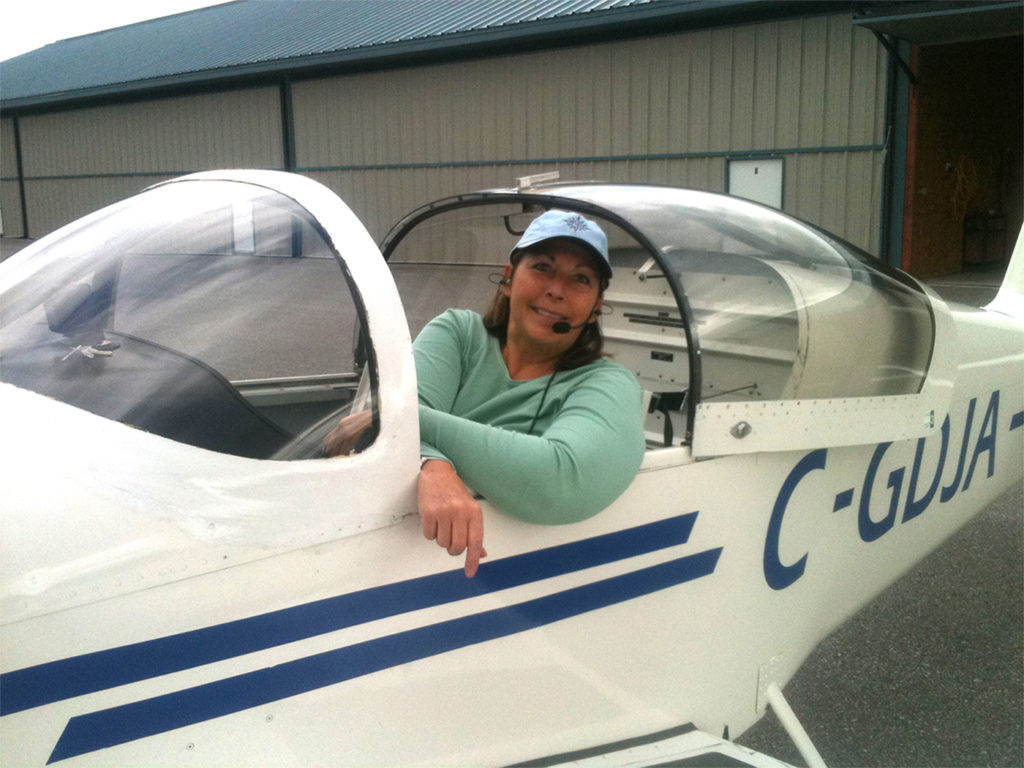
Back in 2009, I had accompanied a friend to a Ninety-Nines (International Organization of Women Pilots) meeting and immediately joined the group. It was interesting to get together with women who instead of showing you photos of their kids and husbands/partners were pulling out photos of their airplanes, and talking about where they had flown around the world.
With the 99s, I have been a chapter chair, I am the current governor for the East Canada Section, and was elected as an international director in 2018. I’m currently the webmaster for the Canadian99s.com and Firstcanadian99s.com websites.
Eventually, I ended up involved in warbirds because of Dave’s affiliation as pilot, and now chief pilot, with Vintage Wings of Canada in Gatineau, Que. I co-ordinate the airshow schedules for the warbirds: the Spitfire, Mustang, P-40, Corsair, Hurricane and Harvard. I’m also involved in search and rescue as a qualified search co-ordinator with the CASARA-Edenvale unit.
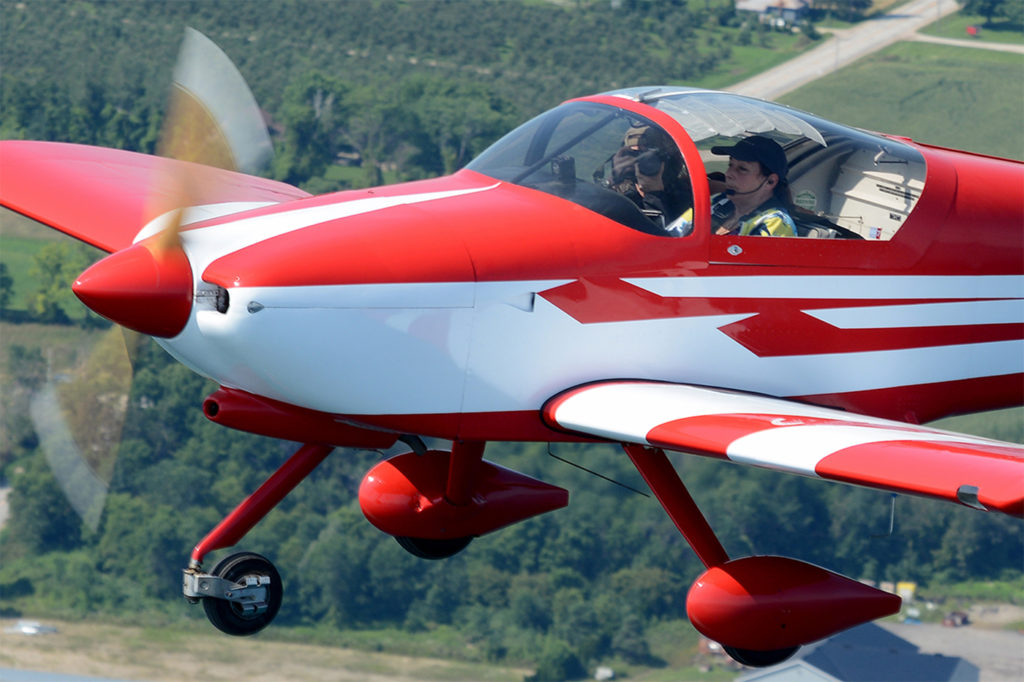
So these days, when the weather’s nice and we each want to fly, we often take both aircraft – instead of a $100 hamburger, it’s now $200! – and smile and wave at each other.
We truly share the sky.
Robin is a general aviation pilot who started flying in 1979. She is a director with the Ninety-Nines International Organization of Women Pilots, the search co-ordinator with CASARA-Edenvale, airshow co-ordinator for the Second World War warbirds in the Mike Potter Aircraft Collection/Vintage Wings of Canada, and an advocate for increasing the number of female pilots.
Dave is a 27,000 hour pilot, flies the Spitfire and other warbirds at Vintage Wings of Canada, and comes from a six pilot family. He’s also a singer-songwriter (with four albums,including one of flying songs), a sailor and a wilderness traveller based near Barrie, Ont. hadfield.ca
